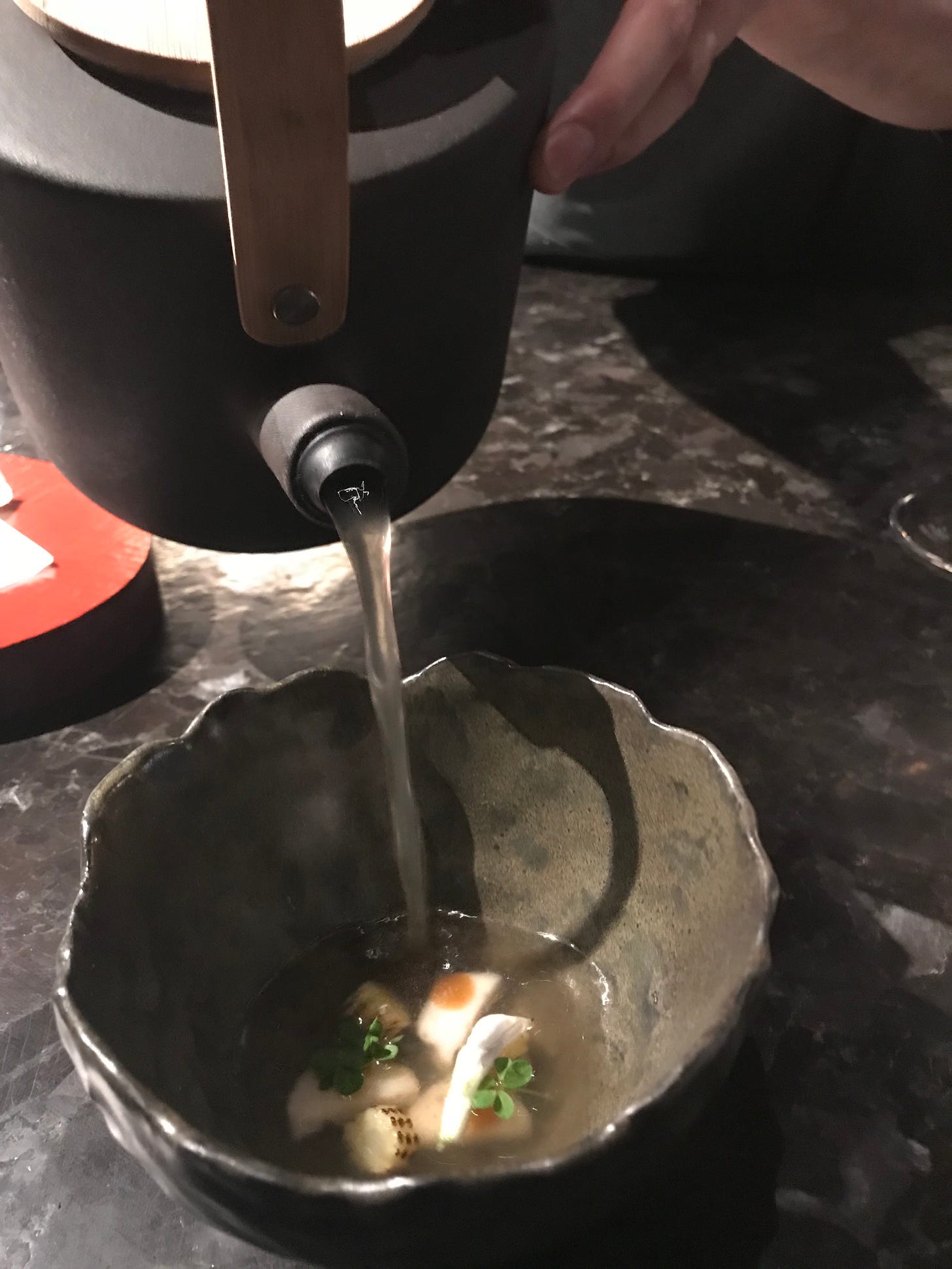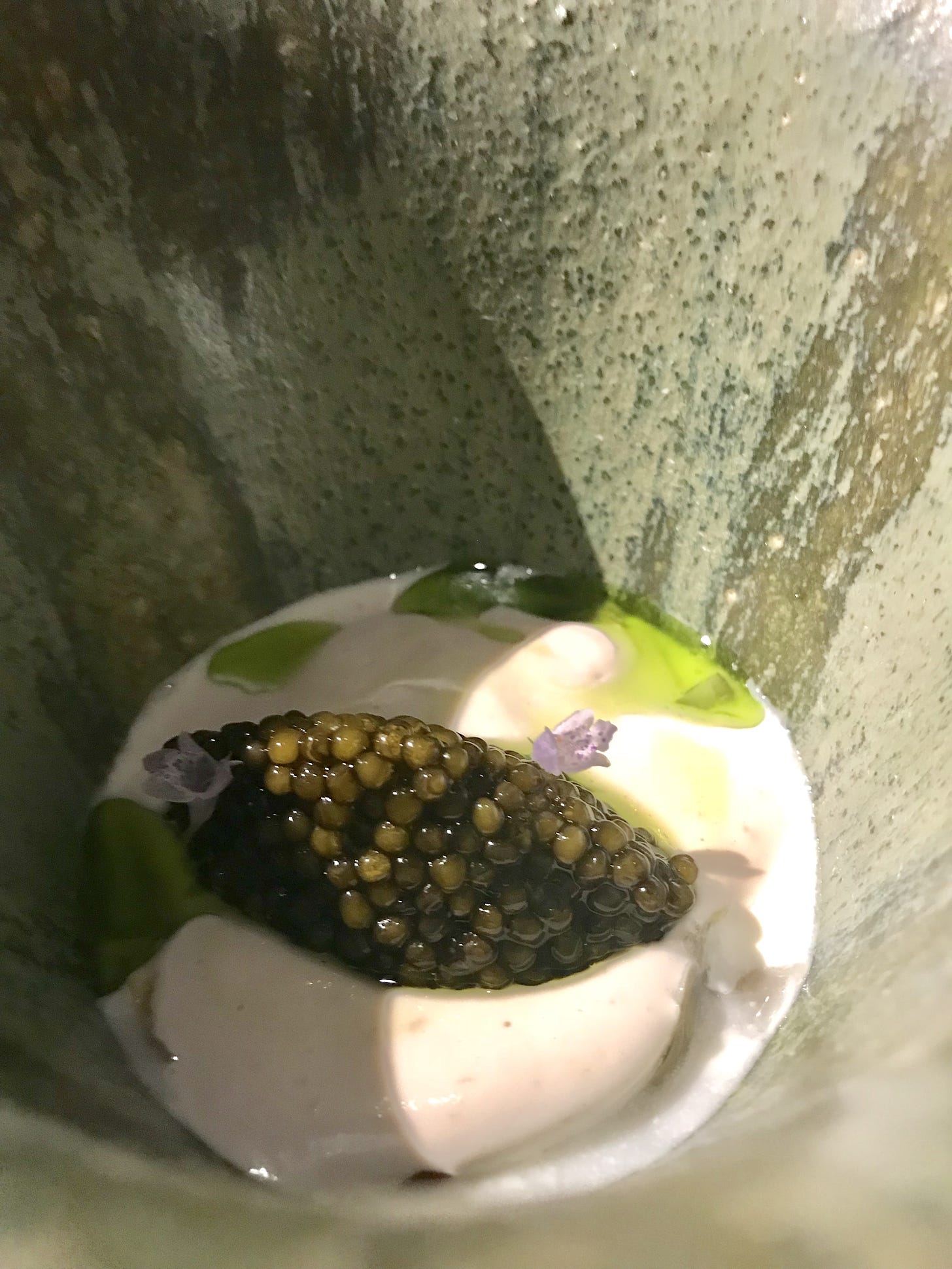Atomix

You leave Atomix with a deck of cards, a gorgeous kind of Tarot set, each one devoted to a dish you have eaten. In another restaurant this might seem like a gimmick, but at this serene almost contemplative restaurant it is something much rarer: it is pride. JungHyun and Ellia Park are too ambitious to simply offer you food: they want you to ingest their culture. You sit at their spare but luxurious ten seat counter and each course tells a tale of Korea; by the time this deliriously delicious evening comes to a close you have a new respect for this complex cuisine. And - if you're me - an enormous desire to learn more. Although the two restaurants do not resemble each other in any way, this is, I think, closer to Blue Hill at Stone Barns than any other place I can think of. When I want friends to experience sustainability, I send them to Blue Hill. In that spirit, I'll be sending people with an interest in Korea to spend a few hours at Atomix. You could, of course, just go and eat the food. Everything we had was artful, beautifully presented, and exciting.

The meal builds. This first course - a roasted burdock soup - was filled with intriguing and unfamiliar flavors. What you are looking at is a preserved Korean plant, mugwort oil, and a little nugget of fishcake. That fishcake, made in house, was unlike any I've tasted before. I wanted more. A lot more.

The next course was hoe - raw fish - and it was stunning. The card tells you that the inspiration came from a poem talking of "fish tossed in golden gleam." That poem becomes sea bream marinated in tangerine vinegar, then topped with a gelatin made of soy sauce, Japanese uni and a bit of chrysanthemum. The flavors were subtle and slightly teasing, the gentleness of the fish underscored by the bitter leaves, the spicy citrus, and the opulence of uni.

A fried course. One elegant langoustine topped with an uni-nasturtium cream. But there was another flavor, prickling my tongue, hovering at the very edges of consciousness, dancing in and out. It was, apparently, a seed pod called chopi, used in Korea before peppers arrived on their shores. Fascinating!

Now we come to the one course that didn't work for me. I love caviar - and this was everything osetra should be - slightly fruity, rounded, a gentle pop in the mouth. But it was overwhelmed by the lovely freshness of the cheese curd, so soft and sexy, so richly milky. That curd was so seductive - a textural magician - I barely noticed the caviar.

This is the chef's idea of pancakes. If you've spent any time around Korean food you've undoubtedly encountered the pajeons - savory pancakes. Here the cake becomes a shadow of itself, a thin crepe embracing golden eye snapper.
But there’s another elusive flavor here, and I worry at it, trying to identify the taste. It is, it turns out, a rare Korean soy sauce, the balsamic vinegar of the country if you will, which has been slowly fermented for at least five years. The resulting elixir is not just salty; it is round, proud - the taste of time.

It was served with the most extraordinary little bowl of rice. The rice, each grain distinct, was mixed with seaweeds, sesame oil and topped with a tender little cloud of tofu.
A tidbit, really, one tiny bite of eggplant with eel mousse. On the side, a poached oyster with kimchi. (And should you be interested in these lovely ceramics, the cards identify each artist.)
Chef Park displays a whole turbot, first grilled then poached. When it next appears it is in a chrysanthemum sauce. I've always thought of chrysanthemum as a rather grumpy flavor, but here it actually smiles.

“If I were to provide the one word that best describe the true Korean flavor, I would undoubtedly say fermentation,” the chef writes on this card. That is the point of this plate. The little cubes of wagyu have been marinated in fermented fruit juice. On the side, fermented wasabi leaves, preserved garlic, ramps, dried seafood. And more in the panchan: preserved radish, cucumber, cabbage. No more than a few tiny bites, but each one eloquent.
Easing into dessert shaved ice tops strawberries and creme fraiche, with coriander and black pepper rocketing through the sweetness. This is what I thought when I took the first spoonful: If you could bite into those first few days of spring, this is what it would taste like.
It looks simple, but there’s so much work in this little dish of rice ice cream with pickled sprout honey. That unfamiliar flavor? It turned out to be a pudding made of the scorched rice left at the bottom of the rice pot.
This was the most provocative and exciting meal I’ve had in a very long time. I’m ready for my next lesson in Korean cuisine; I can hardly wait for the next menu.




